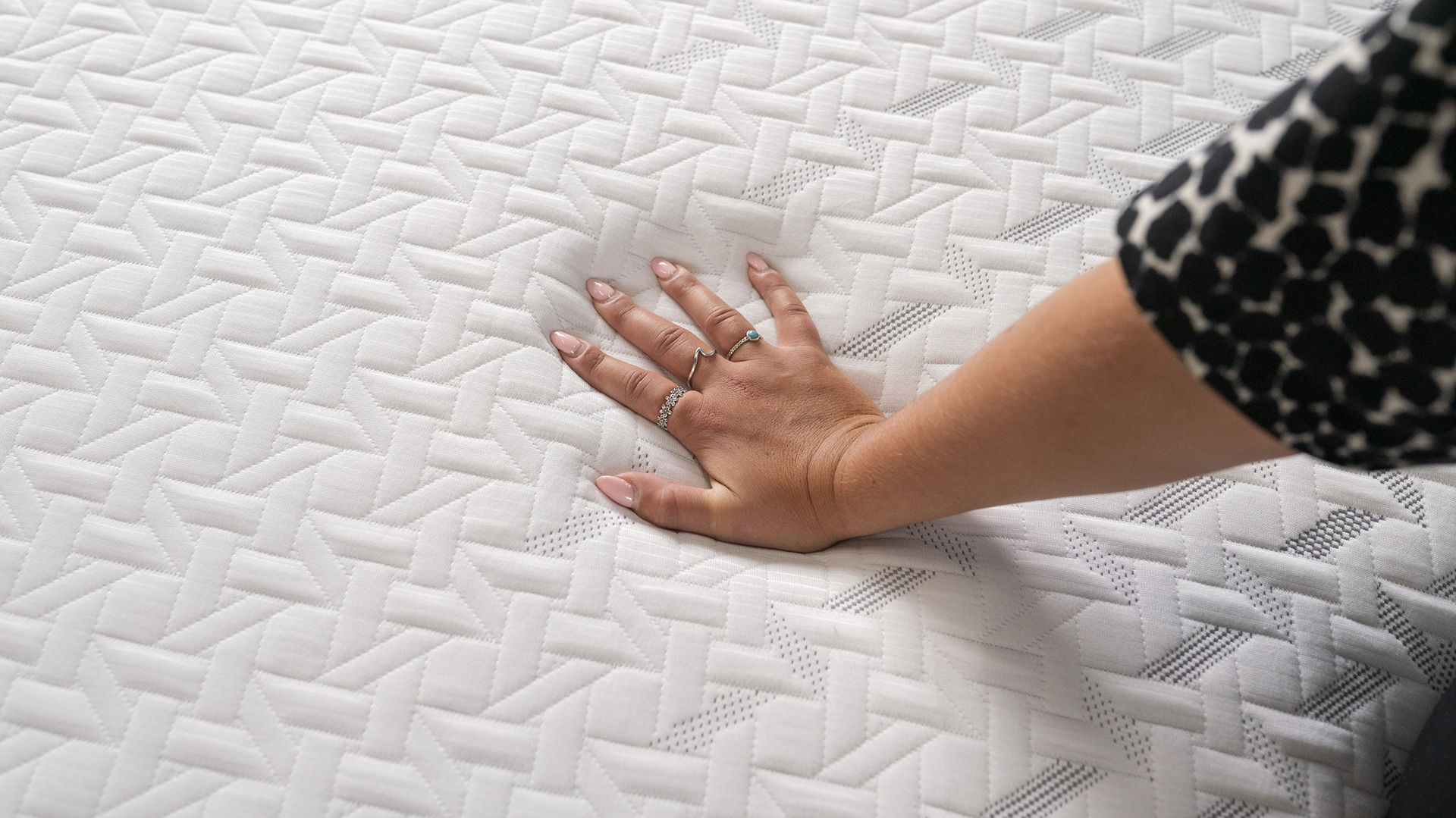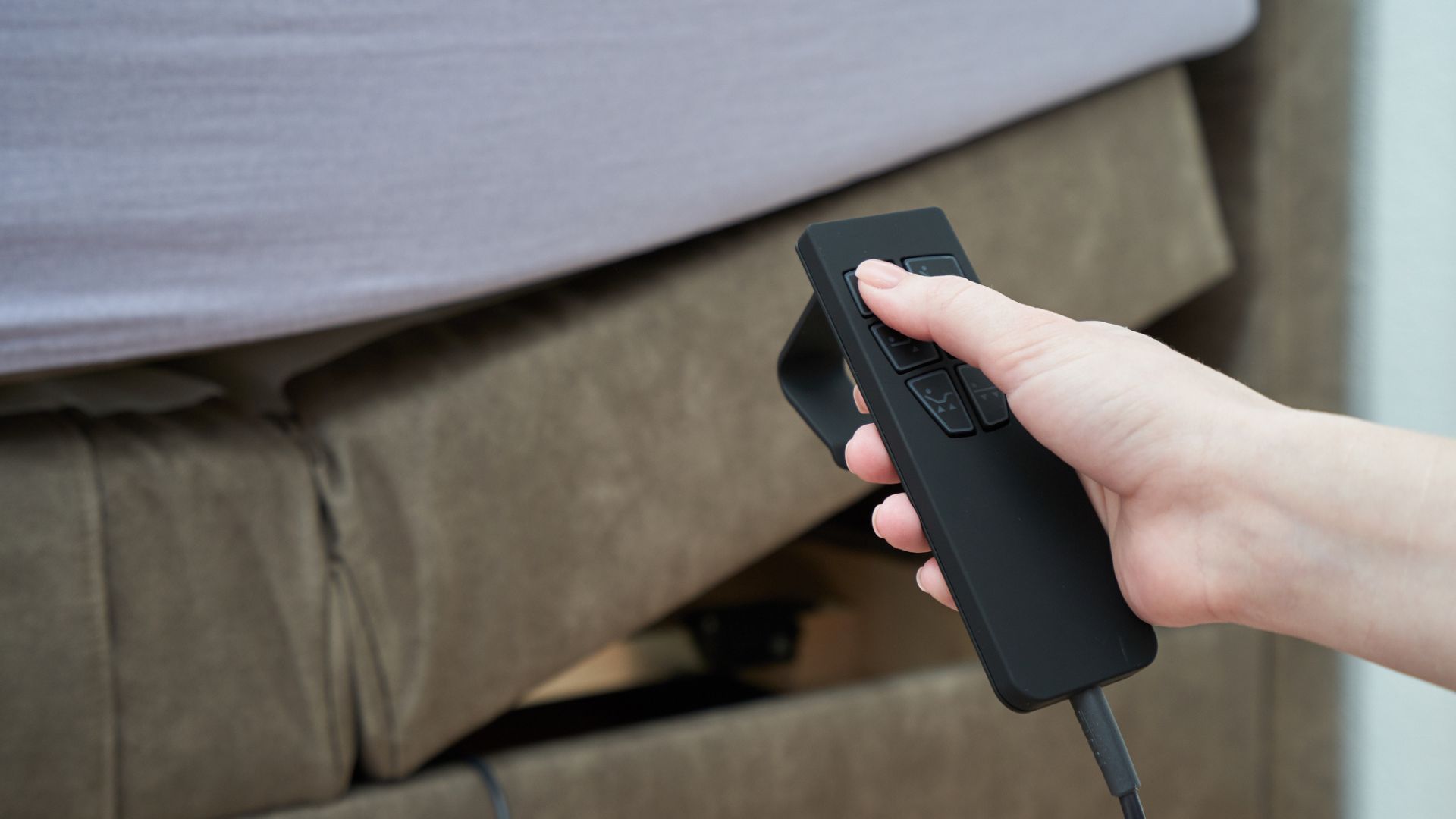Can you put a memory foam mattress on an adjustable bed?
How to find a memory foam mattress that will fit perfectly with your adjustable bed

Adjustable bed bases have many benefits, from silencing snoring to alleviating aches and pains. If you're thinking of investing in an adjustable frame you'll need a mattress to match, and the cozy cushioning of an all-foam bed might sound just right — but can you put a memory foam mattress on an adjustable bed?
For the most part, yes. Memory foam mattresses typically have plenty of flex, allowing them to move with the bed frame whenever you make an adjustment.
There are likely to be some exceptions to the rule, but if you're enticed by one of the best memory foam mattresses we've tested, it should be a good fit for your adjustable bed. Below we'll explore what to look for (and what to avoid.)
What is a memory foam mattress?
Memory foam mattresses have become one of the most popular bed types, thanks to their cushioned feel and typically excellent pressure relief. Using multiple layers of foam to blend support with comfort, you'll find several all-foam models in our guide to the best mattresses we've tested
Known for their durability and affordability, memory foam mattresses are available in everything from a quicksand-soft feel to a hard and unyielding finish. This means that if you want the perfect memory foam mattress for your adjustable bed, you should have ample choice.
What is an adjustable bed base?
An adjustable bed is a bed frame that can be lifted and lowered in certain areas, to adjust the angle you're lying at. Many adjustable bed frames feature both head and leg elevation (meaning both the top section and bottom section of the frame can be moved) but some only have head elevation.

Adjustable beds are often popular with those who experience back or joint pain, as the head and feet elevation of zero gravity positioning can help reduce aches.
Get instant access to breaking news, the hottest reviews, great deals and helpful tips.
Sleeping with a raised head and neck can also alleviate snoring and symptoms of sleep apnea. It's also a more comfortable position for reading or watching TV in bed.
Can you use a memory foam mattress on an adjustable bed?
Yes, you can use most memory foam mattresses on adjustable bed bases. This is because memory foam is able to flex and bend, allowing the mattress to move with the bed base without losing its shape.
Due to this flexibility, memory foam is one of the top mattress types recommended for use on an adjustable bed base. As you lift the head of the frame the memory foam mattress should easily bend upwards, while putting little strain on the materials. Or on your comfort: a memory foam mattress should remain supportive even as it bends into place.
There are some memory foam mattresses that won't be suitable for use with an adjustable base but these are few and far between (although we recommend checking the warranty terms before choosing any bed base for your mattress.)

What to look for in a memory foam mattress for an adjustable bed base
As most memory foam mattresses can be used with adjustable bases, you're able to focus on your sleep needs when finding the right mattress for you. These are the three areas worth prioritizing when searching for a memory foam mattress for an adjustable bed.
1. The right firmness level
Mattress firmness refers to the overall feel of the mattress, and while we often associate foam with its cushioning powers, all-foam beds come in every feel, from the marshmallow-soft to the ultra-hard.
You can use a memory foam mattress of almost any firmness level on an adjustable bed base — although some very firm models might not be compatible, for reasons we'll cover below — which allows you to opt for the feel that best suits your needs.

The best mattresses for side sleepers often have a medium to medium-firm feel, to cushion the shoulders, while the best mattresses for stomach sleepers typically use a firm build to enhance support.
One thing to note is the flat base of an adjustable bed can make your mattress feel firmer — keep that in mind when choosing the perfect feel for you.
2. Ample support
Adjustable bed bases are a popular choice for people experiencing reoccurring back pain. To ensure your memory foam mattress isn't worsening your back pain, it needs to have plenty of support in the central third.
The best mattresses for back pain often have enhanced lumbar support, a feature most commonly found in hybrid mattresses. However, memory foam mattresses with a dense and sturdy base can still offer the support you need.
3. Pressure relief
If you're choosing an adjustable bed frame to help alleviate joint pain, you should consider a mattress with plenty of pressure relief. Luckily, this is an area where memory foam mattresses tend to shine.

The thick cushioning of memory foam mattresses can evenly distribute weight where your body presses into the bed, preventing pressure from building up. This is particularly important for side sleepers (who need cushioning at the shoulder and hips), but back and side sleepers will also appreciate some relief for their joints and back.
Are there any memory foam mattresses you can't use an on adjustable bed?
There are some mattress types that can't be used with adjustable bed bases but few of them are all-foam (continuous coil mattresses are the main type to avoid.)
However, if you do plan on using your memory foam mattress with an adjustable base, it's worth checking compatibility. Using a mattress on the wrong bed frame can void the mattress warranty, preventing you from receiving a refund if the mattress is faulty.
These are the most common reasons why a memory foam mattress might not be compatible with an adjustable bed frame.
1. It's too tall
Mattresses with a depth taller than 14 inches aren't always compatible with adjustable bed bases, regardless of the materials used in the mattress. These thick designs often have limited flex and are unable to bend properly when the adjustable bed moves.
But that doesn't mean you can't use any taller mattress on an adjustable bed base. For example, the GhostBed Luxe Foam mattress is 14 inches tall and has enough flex to work on a adjustable frame.
2. The materials are low quality
You can use a cheap memory foam mattress on an adjustable bed base (and some of the best cheap mattresses we've slept on are all-foam.)

However, the inner materials of low quality memory foam mattresses often deteriorate quickly with use. The bending and flexing of an adjustable bed base can cause this breakdown to happen quicker.
So although you can pair your adjustable frame with an inexpensive all-foam mattress, you might find it doesn't provide the comfort you need for as long as you hoped.
3. It's too firm
In order to move with the bed frame when you make adjustments, a mattress needs to have some bend and flex. This can be an issue if you've opted for the ultra-hard feel of one of our favorite firm mattresses.
However, the firmest mattress we've tested is the aptly named Plank Firm and even this can be used with an adjustable bed frame — so we doubt it's a problem you'll run into.

Ruth is an experienced Senior Staff writer at Tom’s Guide, covering all things sleep and mattresses. She writes to help people sleep better, from how-tos to the latest deals to mattress reviews, and has interviewed an array of experts who share her passion. She is also our specialist on memory foam — she’s flown around the world to see memory foam being made — and leads our hotel mattress content. She has a deep interest in the link between sleep and health, and has tried enough mattresses, from Helix to Nectar to Simba, to know the right bed really can make a difference to your wellbeing. Before joining the team at Tom’s Guide, Ruth worked as a sleep and mattress writer for our sister website, TechRadar.
You must confirm your public display name before commenting
Please logout and then login again, you will then be prompted to enter your display name.
